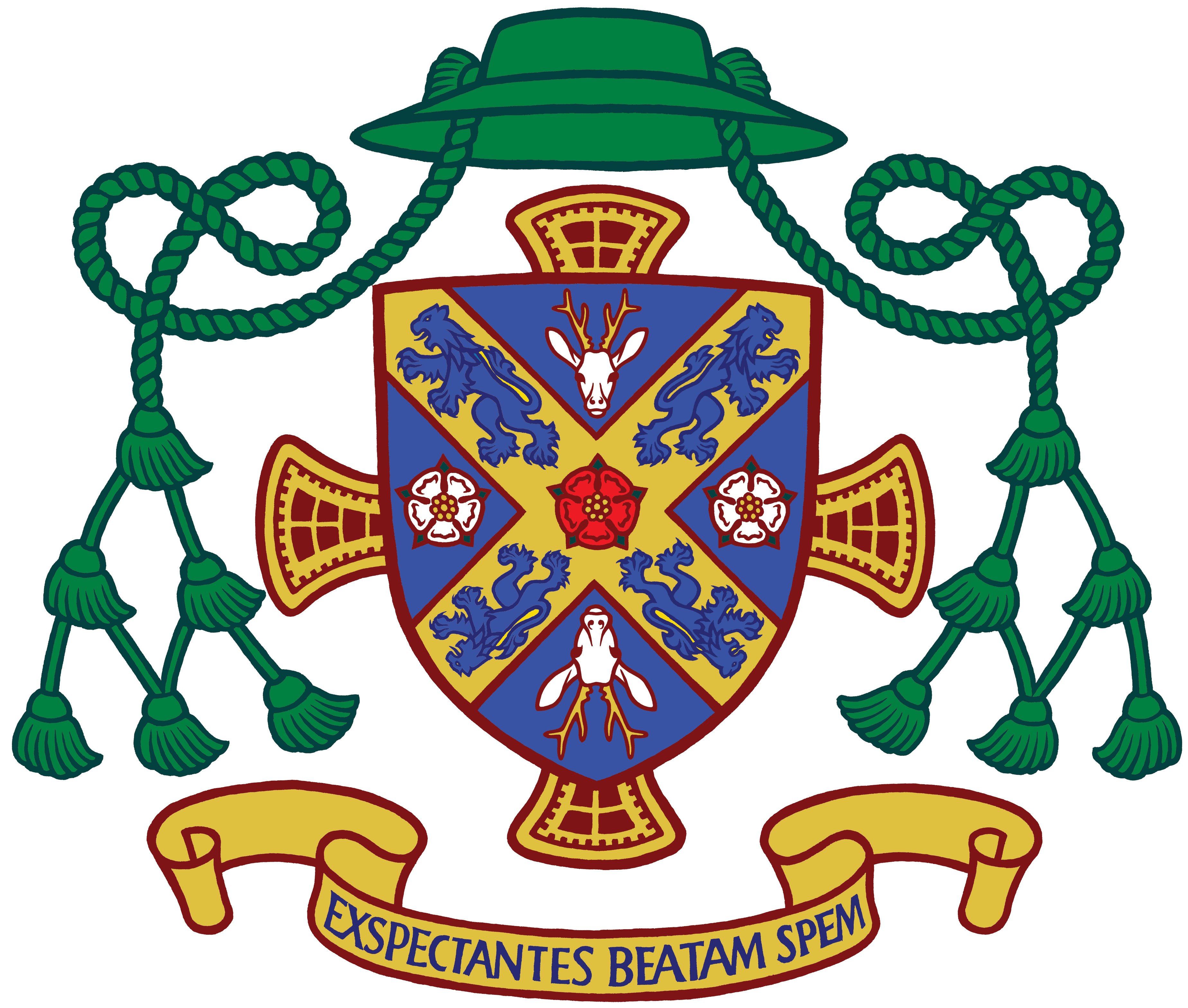Dear Sisters and brothers,
We are getting ready to welcome a visitor; someone special is coming to stay with us for a few short days. Someone is coming to be with us about whom we have heard, read and thought, who has been part of our prayers. We have seen pictures and photographs, shared stories and maybe even watched films about them. Who am I talking about – well, St Thérèse of the Child Jesus, the Little Flower? We are really blessed in this diocese because not only are the relics of St Thérèse being brought to our Cathedral on Friday, 3 October, and remaining there until noon the next day, but they will also visit York Minster on 1 October.
Why relics? We believe that our God is the God of the living and the dead. We believe that we are called to share in the life of the Trinity in paradise when this life is completed in death. We also hold that each of our lives affect the lives of all. This is especially true of the lives of our “great ones”, our “heroes and heroines” in the faith, the Saints, who have shown us how to live out the gospel in our daily lives. When someone is important to us we keep reminders of them close to us – photographs, keepsakes. We talk about them and share the joy and love that they brought us with others. This is the same with the Saints, the Holy Ones, the “celebrities” of our faith.
We also believe in the Communion of Saints. We profess that these Holy Ones are already sharing in the life of the Trinity in heaven and that in some real but mystical way they also intercede for us before the face of God. We pray in the Mass: “You renew the Church in every age by raising up men and women outstanding in holiness, living witnesses of your unchanging love. They inspire us by their heroic lives, and help us by their constant prayers to be the living sign of your saving power.” (Preface of Holy Men and Women II)
Thérèse Martin was born in Alençon in France in 1873; having sought special permission from the Pope himself and the local bishop, she entered the Carmelite Convent in Lisieux at the age of 15. Soon after she contracted tuberculosis, and realising that it would shortly take her life, she began, at the insistence of her blood sister, Pauline, also a Carmelite nun, to write her autobiography. Together with some other writings this was given the title “Story of a Soul”. It is here that she describes her relationship with God. On 30 September 1897, at the age of 24, Thérèse died. Such a short life, but with what great impact on so many through the years!
She speaks of her spiritual progress in terms of “The Little Way” and she explains it in the following words: “It is to recognise our nothingness, to expect everything from God as a little child expects everything from its father.” Perhaps it is because she was one of the first saints to be photographed – like St Bernadette – that she quickly found a place in so many people’s lives, Catholics, Christians of all denominations, people of other religions and none? Perhaps it was the appeal of a young, innocent girl dedicating her life to God in such a radical and complete way? Perhaps it was because she was able to express deep and commonly felt truths in simple accessible words? Maybe a combination of all these things, but she certainly found a place in the hearts and lives of many?
Just listen to a few of her words.
“For me prayer is an aspiration of the heart, it is a simple glance directed towards heaven, it is a cry of gratitude and love in the midst of trials as well as joy; finally it is something great, supernatural which expands my soul and unites me to Jesus.”
“All the gifts of heaven, even the most perfect of them, without love, are absolutely nothing; charity is the best way of all because it leads straight to God. Charity – that was the key to my vocation. Love is, in fact, the vocation which includes all others. It is a universe of its own, comprising all time and all space – it’s eternal. I had discovered where it is I belong in the Church, the niche God has appointed for me. To be nothing else than love, deep down in the heart of Mother Church, that’s to be everything at once – my dream wasn’t a dream after all.”
St Thérèse may not have been great or important by the world’s standards, but she was canonised in 1925, made the patron of the Missions in 1927 and declared a Doctor of the Church in 1997. For us she is indeed a woman of outstanding holiness; she is a genuine witness of God’s unchanging love. We cannot help but be inspired by her heroic life as we are helped by her constant prayers. May the visit of the relics of St Thérèsee of Lisieux, the Little Flower, to the Diocese of Middlesbrough help us all to be the living sign of the Lord’s saving power in the days, months and years ahead!
Yours in blessed hope,
Terence Patrick Drainey
Bishop of Middlesbrough

